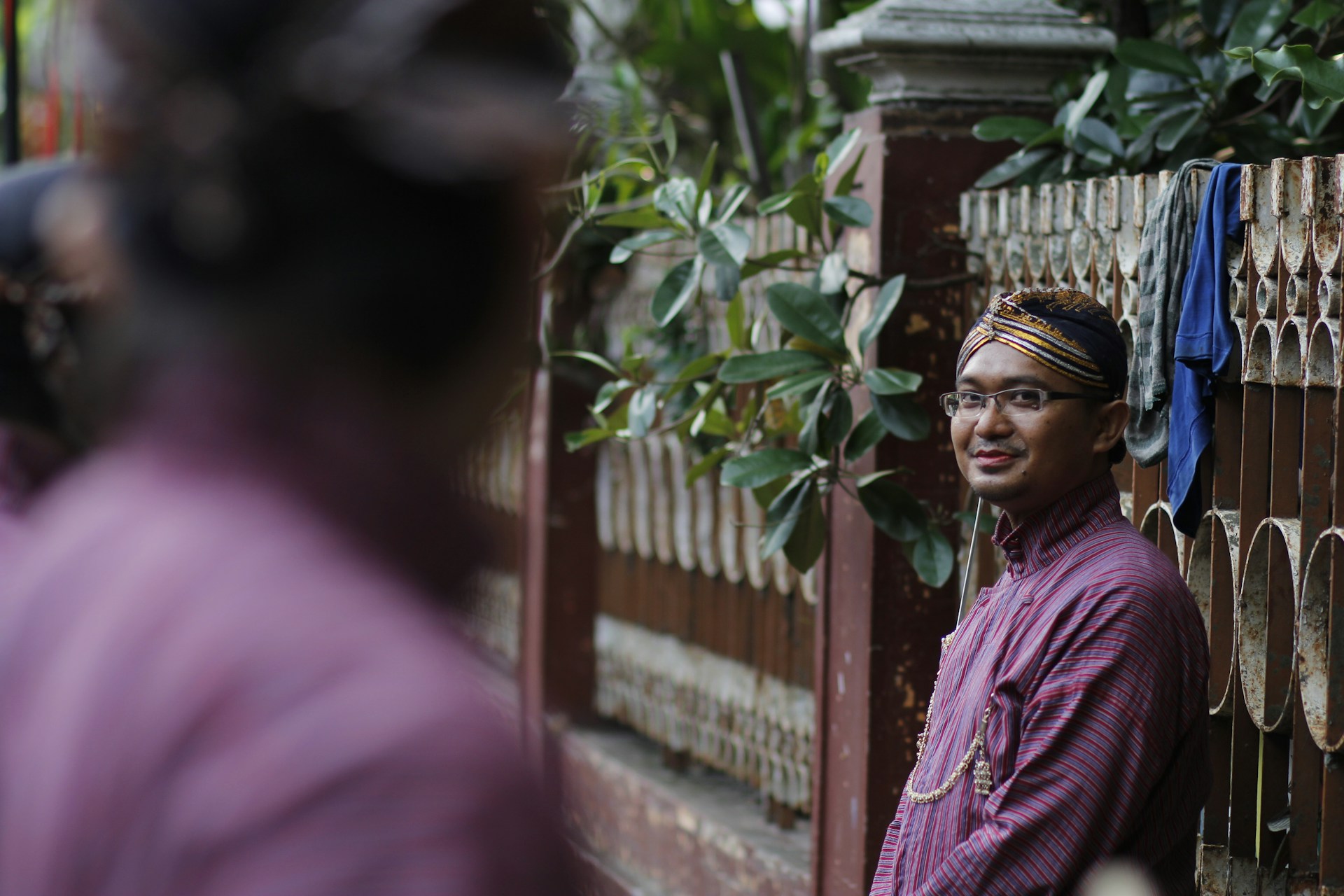Dream Book of Detached Toenails: Complete Meaning and Interpretation
Discover the deep meaning behind dreams of detached toenails. Learn the interpretations and symbolism in the dream book to understand the hidden messages of your dreams.


Old book illustration of Primbon (credit: unsplash)
Primbon has been an integral part of the Nusantara culture for centuries. The roots of this tradition can be traced back to the pre-Islamic era in Java, where animism and dynamism beliefs were still strong. Over time, primbon has undergone evolution and acculturation with various cultural influences, including Hindu-Buddhist and Islam.
In Banten, primbon developed under the influence of the Banten Sultanate, which thrived from the 16th to the 18th centuries. Meanwhile, Javanese primbon was more influenced by the Islamic Mataram Kingdom based in Central Java and Yogyakarta. The differences in historical and cultural backgrounds are among the factors that shape the uniqueness of each primbon.
Banten Primbon tends to be more infused with Islamic nuances, considering the important role of the Banten Sultanate in the spread of Islam in the region. On the other hand, Javanese primbon still retains more elements of pre-Islamic beliefs, although it has also adopted Islamic elements in its development.
Primbon can be defined as a collection of traditional knowledge that contains predictions, guidance, and life principles based on calculations of time, days, and various natural phenomena. Both Banten and Javanese primbon serve the main function as a guide in daily life, from determining auspicious days for important activities to predicting a person's fate and character.
The functions of primbon in traditional society include:
Although they serve similar functions, Banten and Javanese primbon have some differences in emphasis and interpretation of various aspects of life.

Old book illustration of Primbon (credit: unsplash)
Some significant differences between Banten and Javanese primbon include:
Banten primbon tends to use a simpler calculation system compared to Javanese primbon. This may be due to the stronger influence of Islam in Banten, which encourages the simplification of the calculation system to make it easier to understand and not conflict with religious teachings.
Although both use the concept of weton (birth date), Banten and Javanese primbon have differences in interpretation and application. Javanese primbon generally has a more complex system in analyzing weton, considering more factors such as neptu (numerical value of the day and market) and wuku (30-week cycle).
Banten primbon more reflects Sundanese culture and Islamic influence, while Javanese primbon is more infused with elements of ancient Javanese and Hindu-Buddhist culture. This is evident from the differences in terms, symbols, and concepts used in both primbons.
Banten primbon tends to focus more on practical aspects of daily life and Islamic spirituality. Meanwhile, Javanese primbon often has a broader scope, including predictions about the fate of kingdoms, natural disasters, and other major events.
Javanese primbon is known for its use of complex symbols and metaphors, such as wayang and tembang (traditional Javanese poetry). On the other hand, Banten primbon tends to use simpler symbols and metaphors that are easier for the general public to understand.
One important aspect of primbon is the calendar system used. Both Banten and Javanese primbon utilize a combination of the Hijri calendar and the traditional Javanese calendar system. However, there are several differences in its application and interpretation.
The calendar system in Javanese primbon includes:
Meanwhile, Banten primbon tends to emphasize the use of the Hijri calendar with slight modifications to suit local needs. This difference reflects the stronger Islamic influence in Banten compared to Central Java and Yogyakarta.
In Javanese primbon, each day has a numerical value (neptu) used in various calculations and predictions. For example:
Similarly, for market days:
Banten primbon, while also using a similar concept, tends to have a simpler and more easily understood calculation system for the general public.

Old book illustration of Primbon (credit: unsplash)
Although there are differences, both Banten and Javanese primbon have similar applications in the daily lives of the community. Some examples of primbon applications include:
One of the main functions of primbon is to determine days that are considered good or suitable for carrying out various important activities. For example, when determining a wedding date, many families still consult primbon experts to choose a day that is believed to bring good fortune to the couple.
Based on the day of birth (weton), primbon is used to predict a person's character, talents, and potential fate. This information is often used as a consideration in various aspects of life, from choosing a partner to career decisions.
Primbon also contains information about traditional medicine, including the use of medicinal plants and healing rituals. Although these practices are becoming less common in urban areas, in some rural regions, there are still those who use primbon as a guide for alternative medicine.
In carrying out various rituals and traditional ceremonies, primbon is often used as a reference to determine the right timing, necessary equipment, and procedures for execution.
Among traditional farmers and fishermen, primbon is still used as a guide to determine the right time for planting, harvesting, or fishing. Although many have now switched to modern methods, some communities still maintain the use of primbon in their agricultural and fishing activities.
It is important to note that although primbon is still considered important by some communities, its use in modern life is decreasing. Many people, especially in urban areas, view primbon more as a cultural heritage than a strict guideline for living.
Although primbon still has loyal followers, its use has also sparked controversy and criticism from various parties. Some of the main criticisms against primbon include:
Many religious leaders, especially from the Islamic community, consider the use of primbon as a form of shirk or associating partners with Allah. They argue that believing in predictions and guidance from primbon can diminish one's faith in God's power.
Critics from the scientific and academic circles often point out that many predictions and guidance in primbon lack a strong scientific foundation. They argue that believing in primbon can hinder the development of critical and rational thinking.
The use of primbon to assess a person's character or fate based on their birth date can lead to discrimination and unfounded prejudices. This can negatively impact social relationships and a person's life opportunities.
Some argue that dependence on primbon can hinder progress and innovation in society. For example, reluctance to start a business or engage in important activities because of waiting for a "good day" can impede productivity and economic development.
There are concerns that primbon can be used as a tool for exploitation by irresponsible parties. For instance, there have been cases where shamans or paranormal practitioners use primbon to extort their clients with false promises about fate or luck.
In the face of these criticisms, many supporters of primbon argue that this tradition should be seen as part of cultural wealth and local wisdom, not as a dogma that must be followed blindly. They emphasize the importance of wise and contextual interpretation of primbon, as well as the need for a balance between respecting tradition and adopting modern thinking.

Some men in traditional Javanese clothing (credit: unsplash)
Facing the challenges of modernity and criticism, efforts to preserve and modernize primbon continue to be made by various parties. Some of the approaches taken include:
Many contents of primbon have now been digitized and can be accessed through smartphone applications or websites. This makes it easier for the younger generation to learn and access this traditional knowledge.
Scholars and cultural figures strive to reinterpret the contents of primbon to make them more relevant to modern contexts. For example, by interpreting predictions and guidance from primbon as metaphors or symbols, rather than as literal instructions.
Some researchers are trying to find correlations between knowledge in primbon and modern science. For example, examining the relationship between time calculations in primbon and astronomical or meteorological phenomena.
Primbon is increasingly viewed as a cultural heritage that needs to be preserved, rather than as a rigid guideline for life. This approach allows society to appreciate the values of local wisdom in primbon without having to follow it blindly.
Efforts in education and socialization are carried out to provide a better understanding of primbon, including its historical and cultural context. This aims to reduce misunderstandings and misuse of primbon.
Through these efforts, it is hoped that primbon can remain relevant in modern society as part of Indonesia's cultural wealth, while still encouraging critical and rational thinking in facing everyday life challenges.
In the context of modern society, both Banten and Javanese primbon face similar challenges and adaptations. However, there are some differences in how the two survive and adapt:
Javanese primbon tends to be more widely known and accepted, even outside the Javanese region. This may be due to the more dominant influence of Javanese culture on a national scale. Meanwhile, Banten primbon is more limited in its use to the Banten area and its surroundings.
Javanese primbon has undergone more efforts for modernization and integration with technology. For example, there are more smartphone applications and websites that provide calculations and predictions based on Javanese primbon. Banten primbon, although also experiencing digitalization, tends to be slower in this process.
Javanese primbon has been the subject of more extensive academic research compared to Banten primbon. This may be due to the availability of resources and greater interest in Javanese culture within the academic sphere.
In some areas, Javanese primbon has undergone adaptations to align more closely with Islamic religious practices. For example, by combining Islamic prayers in rituals that use primbon calculations. Banten primbon, which has been more infused with Islamic nuances from the beginning, tends to maintain this characteristic.
Elements of Javanese primbon are often used in the creative industry, such as film, literature, and performing arts. Meanwhile, Banten primbon has not been widely explored in this context.
Despite facing different challenges, both Banten and Javanese primbon remain important parts of Indonesia's cultural heritage. Both reflect the richness and diversity of local traditions that have developed over centuries.

A man in traditional Javanese clothing (credit: unsplash)
Despite much criticism and controversy, primbon still plays a role in the decision-making process for some Indonesian communities, especially in matters considered important or sacred. Some aspects where primbon is still often used in decision-making include:
The selection of wedding dates still often refers to primbon calculations. Many families believe that choosing an auspicious day based on primbon can bring luck and harmony to the couple.
Some entrepreneurs, especially from traditional backgrounds, still consider primbon guidance when choosing the right time to start a new business or expand their business.
In Javanese and Banten traditions, the selection of a date to begin house construction or move into a new home often refers to primbon calculations. It is believed to bring safety and prosperity to the inhabitants of the house.
Some families still use primbon as a guide in choosing names for their children. Names are considered to have an influence on the child's fate and character in the future.
Although not as common as before, there are still individuals who consult primbon experts for guidance on suitable career choices based on their birth dates.
It is important to note that in a modern context, the use of primbon in decision-making is often more complementary than a primary determinant. Many people use primbon as one of the considerations while still taking into account other rational and practical factors.
Interestingly, similar concepts to primbon can be found in various cultures around the world. This indicates that the human desire to understand and predict the future is universal. Some examples of similar traditions from different cultures include:
This cross-cultural comparison can provide an interesting perspective on how societies around the world strive to understand and cope with uncertainty in life.

A woman in traditional Javanese clothing (credit: unsplash)
Banten and Javanese Primbon, although having the same roots, have evolved into unique traditions with different characteristics and emphases. Both reflect the richness of culture and local wisdom that have been passed down for centuries.
In the modern era, primbon faces various challenges and criticisms. However, efforts for preservation and adaptation continue to ensure that this traditional knowledge remains relevant and can be appreciated by future generations.
It is important to view primbon not just as a tool for divination or a rigid guideline, but as a cultural heritage rich in symbolism and life philosophy. With a deeper and contextual understanding, primbon can serve as a window to understand the thought processes and values of traditional Indonesian society.
Despite the differences between Banten and Javanese primbon, both remain an important part of Indonesia's cultural mosaic. Studying and understanding these traditions can help us appreciate the diversity and richness of the nation's cultural heritage, while still thinking critically and rationally in facing the challenges of modern life.
Discover more interesting reviews at kapanlagi.com. If not now, when, KapanLagi?
(kpl/psp)
Cobain For You Page (FYP) Yang kamu suka ada di sini,
lihat isinya
Discover the deep meaning behind dreams of detached toenails. Learn the interpretations and symbolism in the dream book to understand the hidden messages of your dreams.
Learn the meaning of pangkalan in Javanese primbon, its philosophical significance, and its influence on a person's fate and fortune according to traditional beliefs.
Discover the deep meaning behind dreaming of seeing someone hang themselves according to Javanese primbon. Check out the interpretations, causes, and how to deal with it here.
What are the tips and ways to choose the right Eid outfit style for the Eid atmosphere? Let's check it out, KLovers!
For those of you who want to watch Korean dramas on legal apps without having to subscribe. Here is a list of streaming apps for Korean dramas without subscription!
Well, this article will help you make the right choice. Here are some ways to choose family uniform outfit models for Eid. Let's check it out, KLovers!
So, for those of you who want to know about AI Bard. Here is an explanation of AI Bard and how to use it. Let's check it out, KLovers!
Here are 7 best AI tools and sites for YouTube transcription, complete with how to use them. All these tools can be used for free or at least with limited free features, suitable for students, content creators, and professionals.
Here is a complete review of Canva: starting from how to register an account, the features available in the free version, how to use it, and the standout features of Canva Pro.
If you want to know about deepfake AI, you can read this article. Here is an explanation of deepfake AI and how to create it. Let's check it out, KLovers!
Here is the list of actors and actresses starring in RESIDENT PLAYBOOK along with the characters they portray:
Curious about the story of Hasan Husein's Eid clothes? Let's dive into the complete review below.